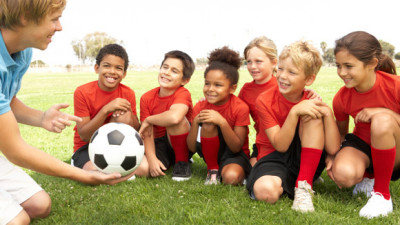Athletics improve physical fitness and coordination, as well as promote teamwork and self-discipline. Sports do not simply act as play, but create an outlet for kids to grow and learn valuable life skills. However, due to the fact that young athletes are still growing, they are unfortunately at a much higher risk for injury than adult athletes.

The good news is many youth sports injuries can be prevented. Some of the more effective ways to prevent these injuries include age-specific coaching, appropriate physical conditioning, and proper use of equipment. In addition, coaches and parents can prevent injuries by fostering an atmosphere of healthy competition that emphasizes confidence, cooperation, and a positive self-image, rather than just winning.
The American Academy of Orthopedic Surgeons offers a useful Guide to Safety for Young Athletes. Among their strategies for preventing youth sports injuries are:
- Be in proper physical condition to play a sport (a pre-participation sports physical examinations can be very useful in screening for potential problems).
- Know and abide by the rules of a sport.
- Wear appropriate protective gear (for example, shin guards for soccer, a hard-shell helmet when facing a baseball pitcher, a helmet and body padding for ice hockey).
- Know how to correctly use athletic equipment (for example, correctly adjusting the bindings on snow skis).
- Always warm up before playing.
- Stay hydrated.
- Avoid playing when very tired or in pain.
Youth sports and athletic activities are generally safe, with low risks and high benefits, the major goal should be enjoyable participation. Exposure to competitive and noncompetitive sports encourages motor skills, social skills, and a life-long appreciation for fitness.
“A Guide to Safety for Young Athletes.” OrthoInfo. American Academy of Orthopedic Surgeons, n.d. Web. 9 Feb. 2016.

